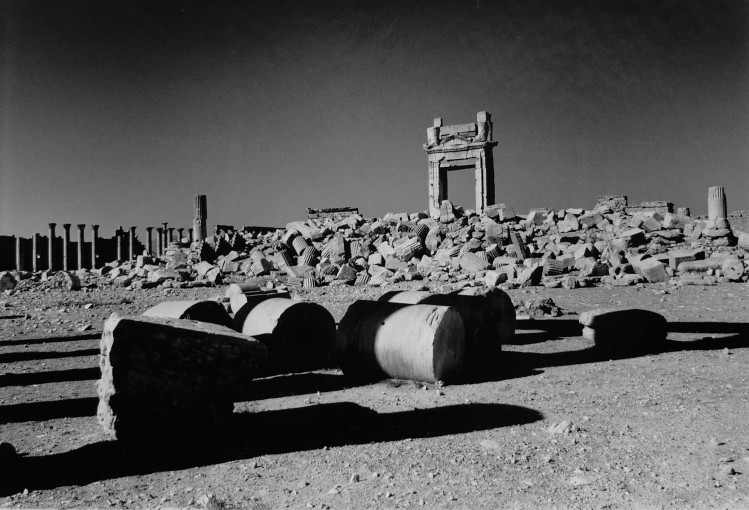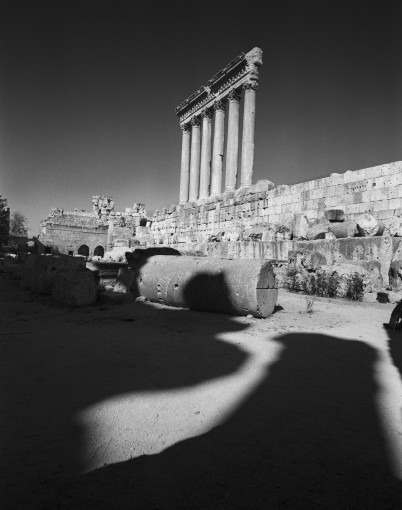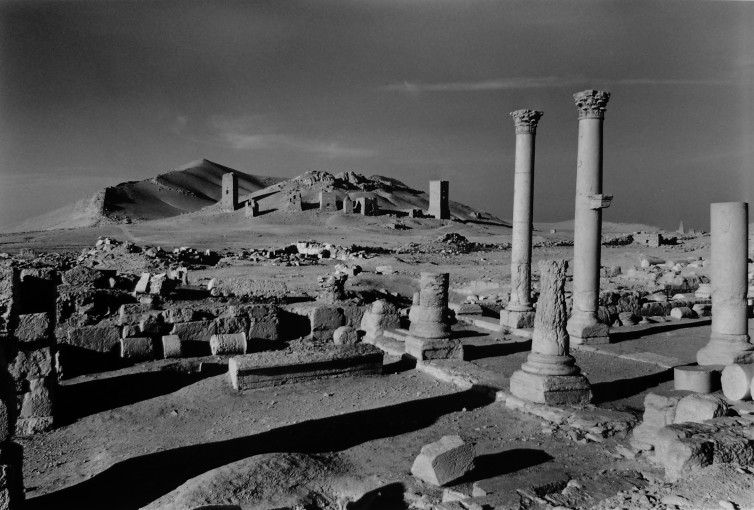Sir Don McCullin’s Southern Frontiers photographs document his ambitious journey to the fringes of the Roman Empire. Throughout a long and distinguished career, McCullin has travelled extensively and he has become familiar with certain remote parts of the globe. This particular series is divided into two parts. The Levant stretchs from the ruins of Baalbek in the Lebanon to Palmyra in Syria, and Jirash in Jordan. The second area is known as the Moghreb and covers a sweeping journey through the North African coastal countries of Morocco, Algeria, Tunisia, and Libya - where he has photographed the great ruins of Leptus Magna.
McCullin’s photographs are taken on a large-format film camera and include the different themes of this great photographer’s multifaceted practice. The immediate impression for the viewer is one of epic beauty – remains of ancient great civilisations lie in ruin in surroundings of sublime natural beauty. They clearly evoke the studies associated with the Grand Tour trend of the 19th-century, where McCullin’s predecessors travelled with sketchbooks and paints to study and learn from history. The three large-scale images in this exhibition at 55 x 44 inches allow the viewer to enter even further into these landscapes.
However, as in much of McCullin’s work, there are underlying social-political connotations. Southern Frontiers stemmed from an initial interest in a northern frontier – Hadrian’s Wall – to which he often returns.
"The frontier is where friction occurs, and somehow it all seems so fitting. If ever a man had made his life's work out of the places where the friction occurs, then Don McCullin is that man. But by studying edge-places long after their particular frictions have died down, he looked for the longer, slower beauties which perhaps is what the wars were about in the first place. And the ironies keep on coming. McCullin was photographing almost as a historian; but in a place like Palmyra, history comes back to bite. The recent deliberate destruction of some of the places Don McCullin photographed with such tenderness is a little lesson in the value of seeing carefully while you can." – Francis Hodgson












